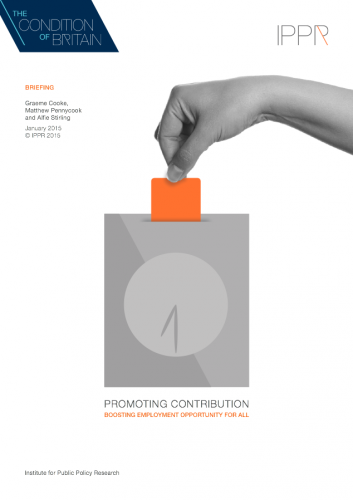This paper focusses on improving support into the job market for people with health conditions and disabilities and those facing long-term unemployment, who face considerable disadvantages.
Growth in the economy will be the most significant factor in headline labour market trends over the coming years. However, if everyone is to have real employment opportunities then traditional welfare-to-work ‘activation’ strategies will need to be substantially overhauled and improved. Minor changes involving supported job-search plus slices of extra provision (such as for skills, IT or confidence-building) will not be sufficient to enable employment among those with a reduced work capacity.
In this report, we propose a plan to raise the employment rate of disabled people and radically reduce long-term unemployment – with four core elements:
- The next phase of the Work Programme should be focused on supporting long-term jobseekers and those ESA claimants recovering from temporary health conditions, with contracts based on meaningful economic geographies and followed by a job guarantee to prevent long-term unemployment.
- Those with a long-term health condition or disability that reduces their capacity to work should participate in ‘New Start’, a new, locally-led supported employment programme for ESA claimants, with integrated budgets and incentives for success.
- Stronger obligations should be placed on employers and employees to exhaust rehabilitation opportunities during sickness absence, to reduce the flow onto ESA.
- The risk of hiring those with a health condition or disability should be reduced by the state taking on sick pay liability for ex-ESA claimants, starting with small firms.





